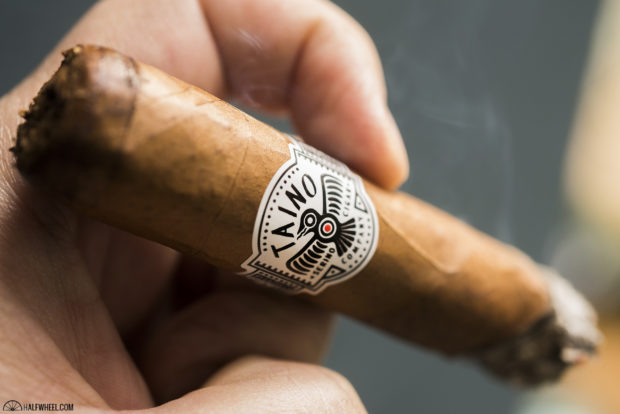At the 2018 IPCPR Convention & Trade Show, Serino Cigar Co. took one of the more interesting approaches of announcing an upcoming cigar: asking for feedback.
The company said that it had figured out the name, blend and sizes for its newest cigar, but it wanted some opinions about what the cigar should like. As such, at the end of the booth was a big poster displaying 18 different colorways of the same artwork, asking retailers to submit votes on which was their preferred design. As an added incentive, if the company picked the design preference of a retailer, the retailer would get a free box with their order.

The name was Taíno, a reference to the group of native peoples of Cuba, the Bahamas, Jamaica, Puerto Rico and other Caribbean islands. The Taíno are credited as the group of people who introduced Christopher Columbus—and the Western world—to tobacco.
Like the rest of the Serino portfolio, the cigars are produced at La Corona S.A. in Estelí. For this blend, the company is using an Ecuadorian habano medio wrapper over a Nicaraguan binder and Nicaraguan fillers. It’s offered in three sizes:
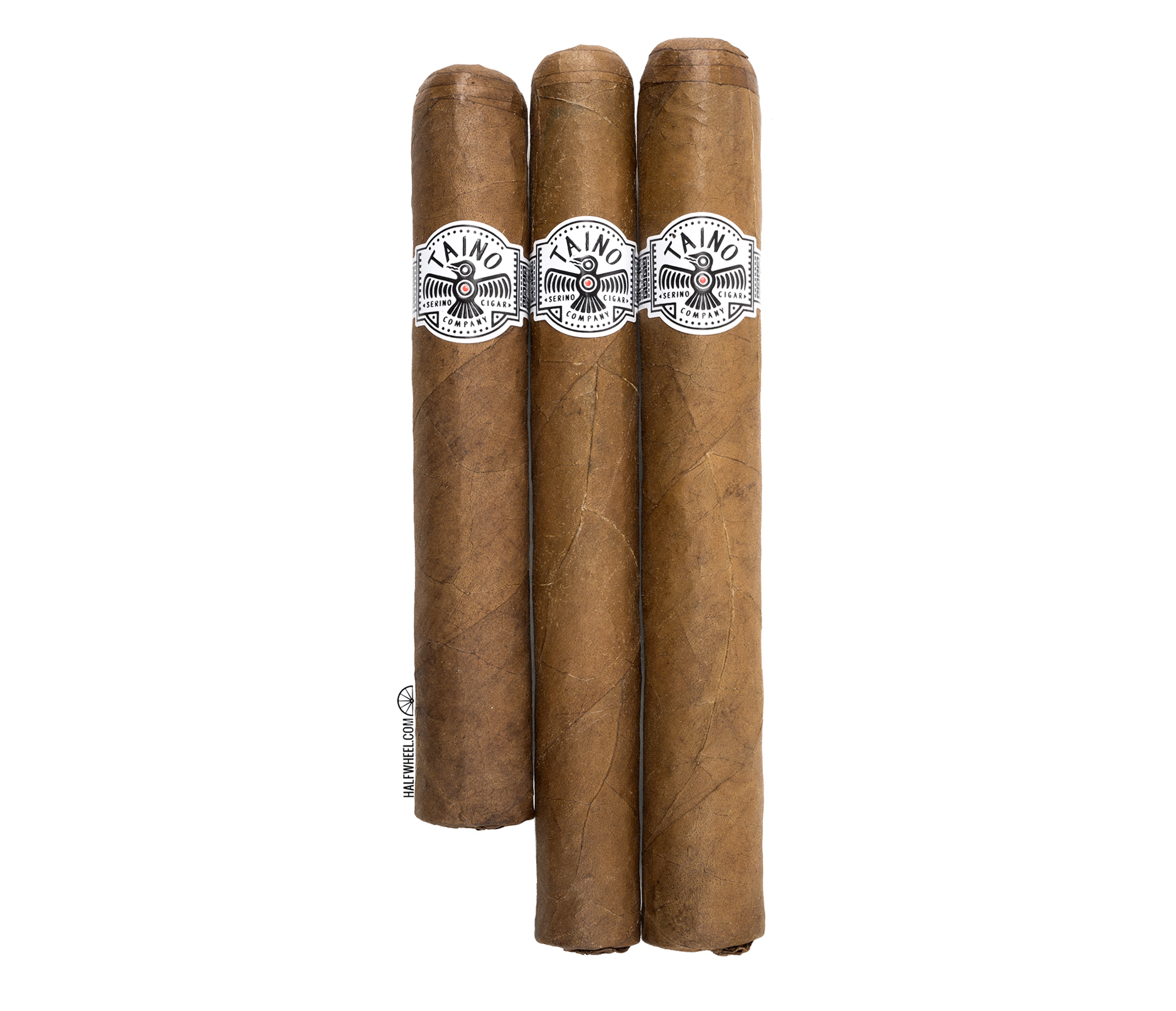
- Taíno Robusto (5 x 50) — $8
- Taíno Corona Gorda (6 x 46) — $8
- Taíno Toro (6 x 52) — $8.75

- Cigar Reviewed: Taíno Toro
- Country of Origin: Nicaragua
- Factory: La Corona S.A.
- Wrapper: Ecuador (Habano Medio)
- Binder: Nicaragua
- Filler: Nicaragua
- Length: 6 Inches
- Ring Gauge: 52
- Vitola: Toro
- MSRP: $8.75 (Boxes of 20, $175)
- Release Date: November 2018
- Number of Cigars Released: Regular Production
- Number of Cigars Smoked For Review: 3
While there are some veins and a slight bumpiness, the wrapper is quite pretty with a dark tan hue and solid roll. Aroma off of the wrapper is super sweet with milk chocolate, almost to the point where it smells like a flavored cigar. The foot has a similar level of sweetness and smells like an oatmeal cookie. While the cold draw of the Taíno is sweet, it’s not as sugary as the aroma categories. There’s some strawberries, oatmeal cookie and a bit of earthiness.
The Taíno Toro begins with some meatiness, floral flavors and citrus, around medium-plus. Despite my normal lighting ritual, I find myself making a second pass with the lighter thanks to the covered foot, which seems to have a bit more moisture than I anticipated. Flavor-wise, the cigar settles on a cedar core with cornbread and some sharpness from an indeterminate pepper. Eventually, I come to the conclusion that it is more of a black pepper note, particularly on the back of the throat during the finish. Some cigars perform better with constant retrohales and the Taíno is one of them, delivering flavors that vary between lemon and a funky grapefruit, similar to a sour saison. Flavor is full, body is medium-plus and strength is medium-plus. Outside of the initial touch-ups, something I didn’t take points off for, construction is great during the first third of all three samples.
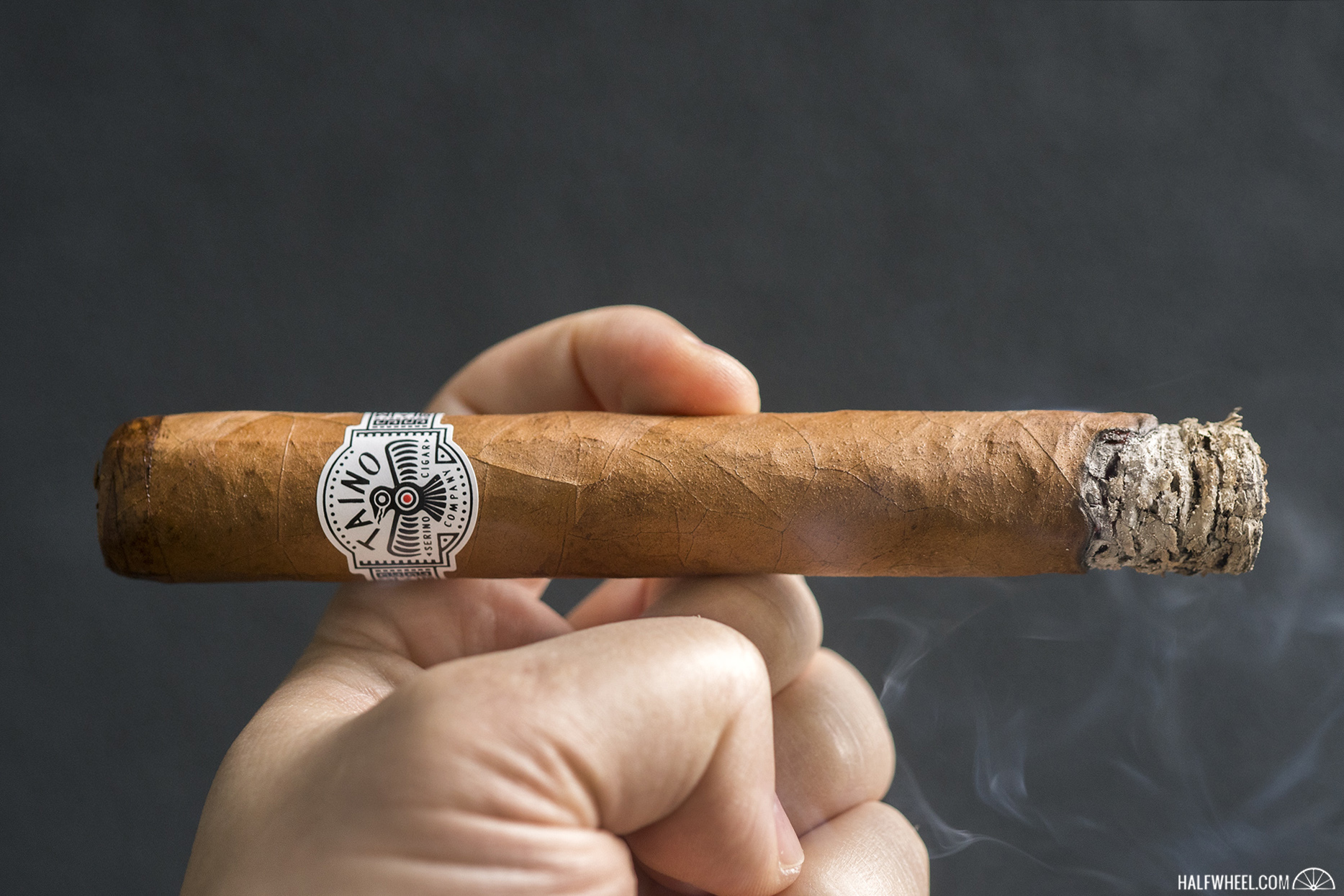
With one notable exception, the second third is a near carbon copy of the first third. While the core is still a mixture of cedar and earthiness, it now has a bit of creaminess but there’s no longer any pepper. I taste a bit of the burn lingering on the back of the throat, but taking additional puffs doesn’t seem to have any effect on its intensity, leading me to believe that this is just a dormant taste. I still find myself taking retrohales on nearly every puff of the Taíno, and they are still delivering grapefruit, though the earthiness now lingers into the finish of the retrohales. Flavor drops down to medium-full, which is also where the body is, while strength hits medium-plus. Each of the three samples require a touch-up to fix an uneven burn, though I never felt like the cigar was in danger of going out.
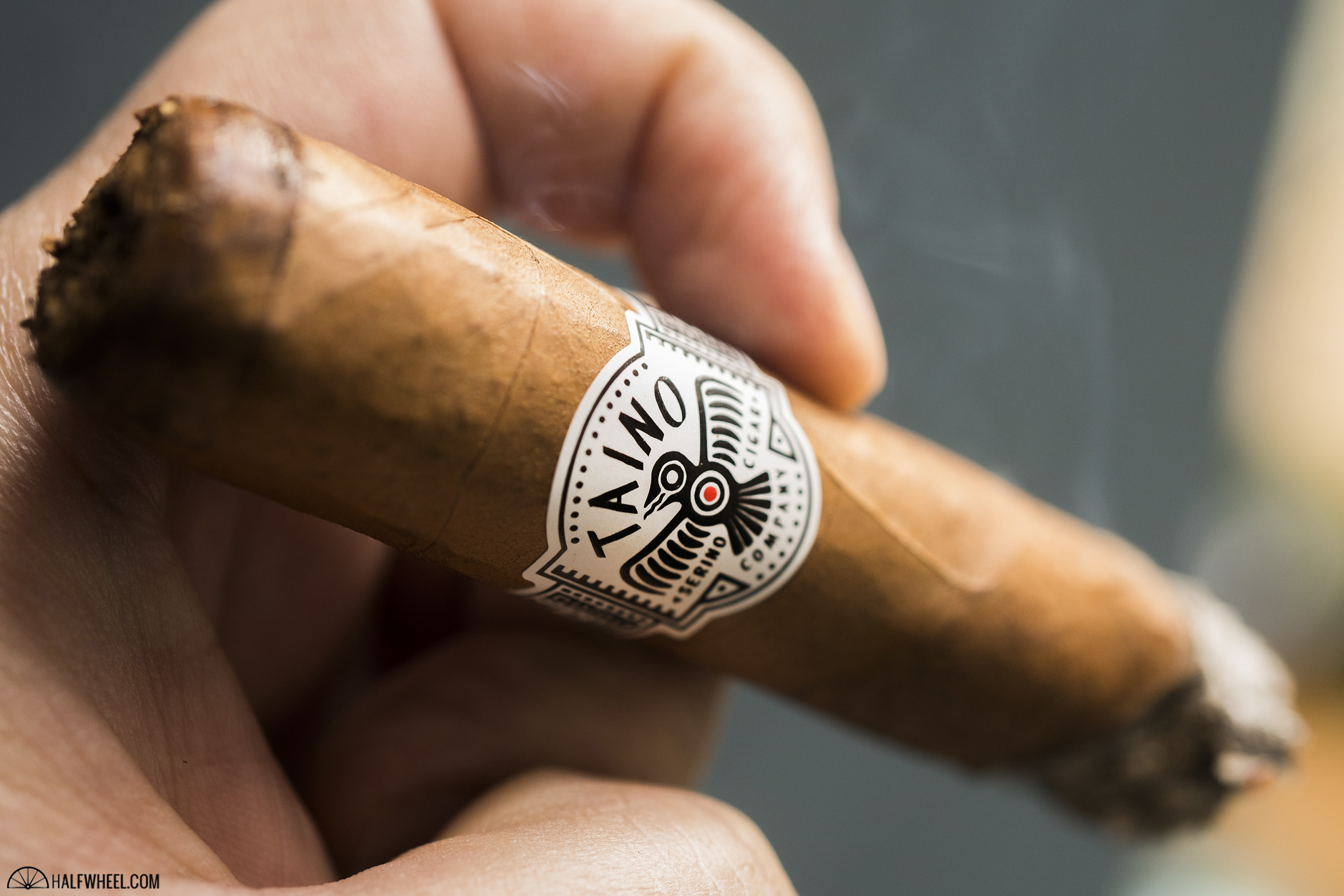
While the first two third were tough to distinguish between flavor-wise, the final third of the Taíno is notably different. For the first time, I pick up nuttiness—now the main flavor in the mouth—joining a resurgent lemon flavor and a buttermilk-like creaminess. What’s still not present is the pepper, relegated solely to the first third. And while the mouth flavors might have changed, the retrohale is similar, earthiness on top of the grapefruit flavor. Flavor stays medium-full, body drops down to medium-plus and strength remains at medium-plus. Construction finishes great and I end up nubbing each sample below the one-inch mark.
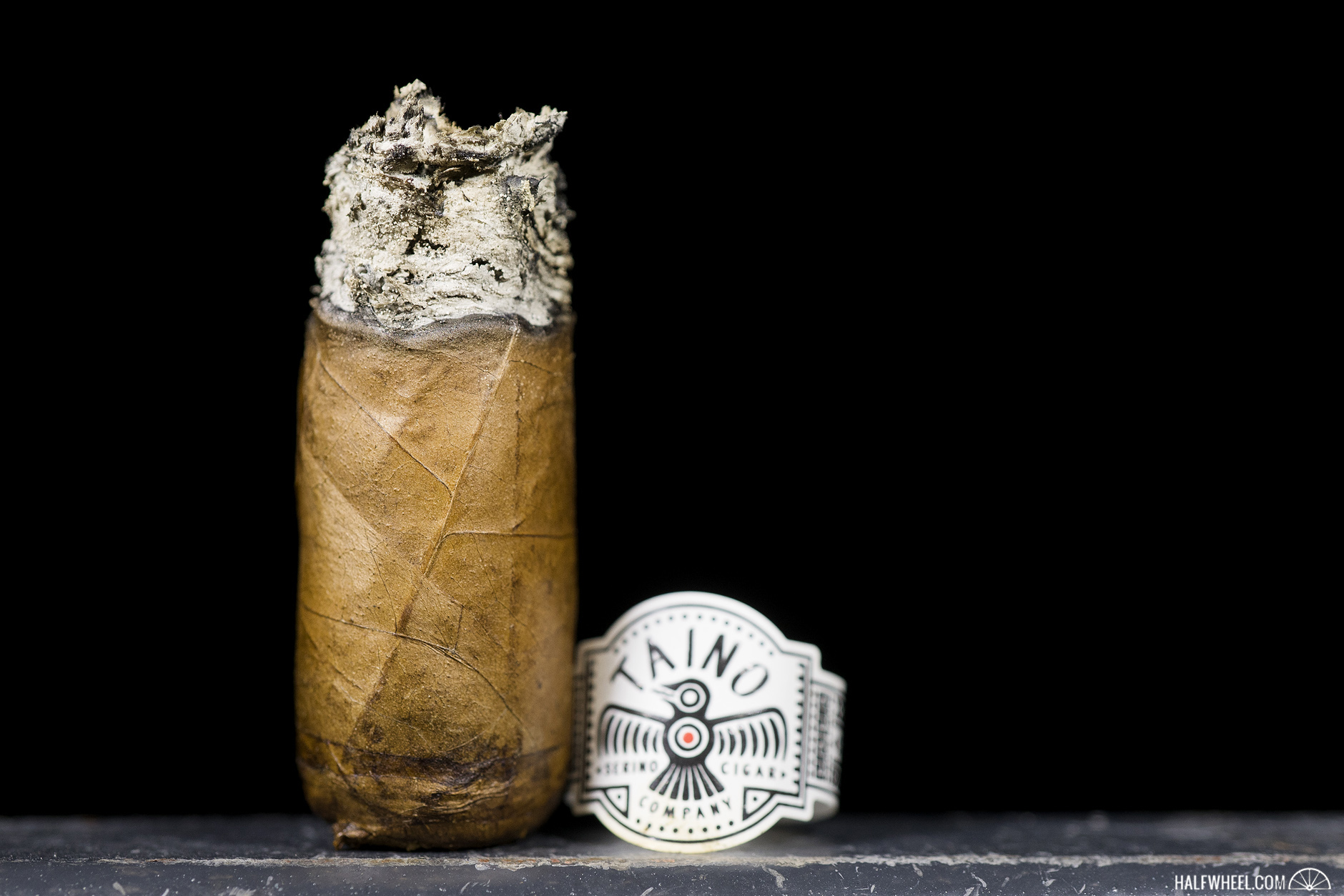
Final Notes
- I cannot say that I was impressed with the initial Serino packaging. That being said, the Taíno and Wayfarer look good, almost to the point where they don’t look like the rest of the line.
- The company stylizes the i in Taíno with an accent, though you wouldn’t know that based on the packaging. The only way I know this is due to a press release.
- Speaking of packaging, out of the 18 designs that were shown off at the trade show, I got zero indication this would be the band that would be chosen.
- One sample struggled getting out of its cellophane. The other two were fine, so I’m not sure what to make of this. Like all the rest of my review cigars, these were stored in the same humidor.
- The covered foot is really flat, almost flat enough that the cigar could probably be stood up straight.
- Strength was medium-plus.
- Cigars for this review were purchased by halfwheel.
- Final smoking time was two hours and 15 minutes on average.
For the $8 and change we paid for these Taíno Toros, we got a very good cigar. The cigar didn't have the kind of profile that ends up being a master of navigating our scoresheet—and the overall score reflects some of those deficiencies, particularly burn issues in the second third—but I would gladly smoke more Taínos on a regular basis. I can’t stress how nice it is to have a cigar that allows me to retrohale puff after puff with zero thought without being the typically mild profile required to do such a thing. It’s definitely the best cigar I’ve smoked from Serino to date and there is a decent chance that this is my favorite cigar from the La Corona Factory.

